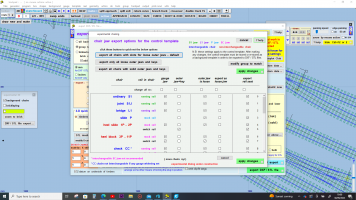https://85a.uk/templot/club/index.php?threads/getting-started-with-3d-plug-track.722/
Very helpful indeed Martin. As possibly you may recall I have been a keen Templot user since at least 2000. However, this last weekend a revelation at scaleforum High Wycombe. This fantastic new aproach. It is more than welcome and I am jumping right in. I have been 3Ding for some few years now and my Ender 3 is getting a but tired but with new belts wheels and TLC has much life yet. A resin printer of my own is coming- can’t use other peoples for ever - The question is is anyone producing an idiot guide to starting with the system in need of a name? Particularly which STL editing software is most effective in editing to bed size and custom “links “ between segment printed separately. And more generally experience for the starter, I don’t say beginner as Templot experience and general 3D use is a pre requisite. I see lots and lots of input and except ideas and feed back. However, it is too much for a simpleton to take in and get a leg up in starting.
George Morris
Very helpful indeed Martin. As possibly you may recall I have been a keen Templot user since at least 2000. However, this last weekend a revelation at scaleforum High Wycombe. This fantastic new aproach. It is more than welcome and I am jumping right in. I have been 3Ding for some few years now and my Ender 3 is getting a but tired but with new belts wheels and TLC has much life yet. A resin printer of my own is coming- can’t use other peoples for ever - The question is is anyone producing an idiot guide to starting with the system in need of a name? Particularly which STL editing software is most effective in editing to bed size and custom “links “ between segment printed separately. And more generally experience for the starter, I don’t say beginner as Templot experience and general 3D use is a pre requisite. I see lots and lots of input and except ideas and feed back. However, it is too much for a simpleton to take in and get a leg up in starting.
George Morris
message ref: 7883
 Search
Search


